What are the diseases of eggplants in a greenhouse and how to deal with them
Eggplants are low-maintenance crops. However, if agrotechnical rules are not followed and sudden climate changes occur, vegetables can become sick. To prevent this, gardeners take preventive measures and treat plants with protective agents.
In this article we will look at what diseases of eggplants exist in a greenhouse and how to deal with them.
What diseases can threaten eggplants in a greenhouse?
Diseases are distinguished fusarium, late blight, tobacco mosaic. Let's look at common diseases in detail.
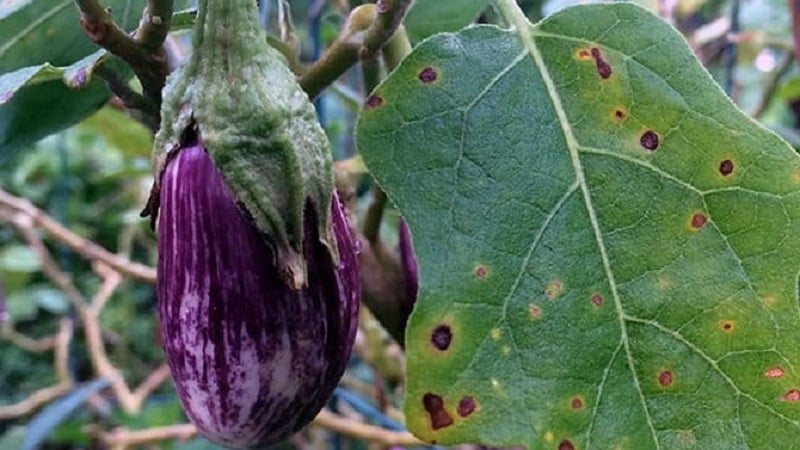
Fusarium
Fungal disease appears due to increased humidity and heat during fruiting. Fungal spores penetrate the stem and, along with water, are spread throughout the plant. Fruits that have scratches or cracks are more susceptible to fusarium.
As a result of infection, plants wilt and grooves appear on the leaves.. To prevent the appearance of fungus, gardeners disinfect the seeds before planting and spray the bushes with Bordeaux mixture or copper sulfate solution.
Important! In case of infection, it is recommended to remove all plants from the greenhouse and burn them away from the garden area. The soil in the greenhouse is being replaced.

Botrytis (grey mold)
Gray mold looks like mold. The causes of infection are untreated soil, remnants of last year's plants and weeds. Fruits can also rot due to thickened planting.Botrytis appears in the form of spots on the leaves and stems, which become larger over time.
To avoid rot, gardeners ventilate the greenhouse daily using special vents and holes. They also make sure that the plants do not get wet: during watering, water is directed directly to the root, and not to the leaves and stems.
In case of detection of gray rot in the beds plants are treated with drugs "Gamair", "Quadris", "Acrobat". Stems and leaves are treated by spraying from a spray bottle in the early morning or evening.
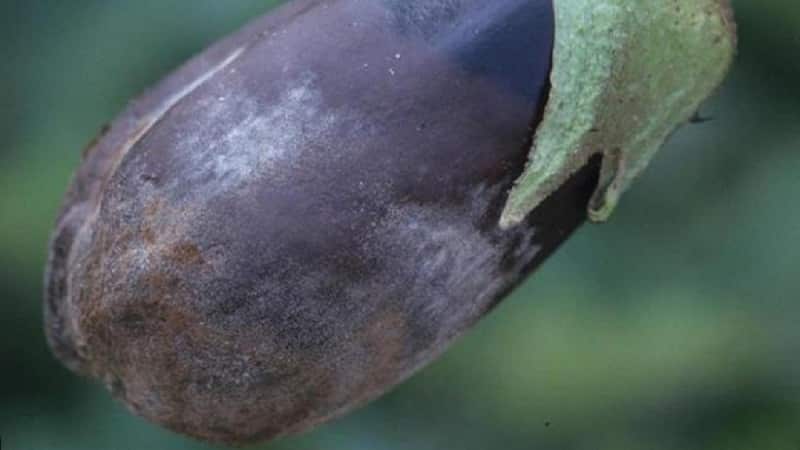
Cercospora
Sources of cercospora - infected plant remainsTherefore, before planting, it is important to clean the beds of debris and weeds, apply fertilizers and disinfectants. The disease is a blight that affects the leaves and then spreads to the fruit. Eggplants lose their taste and become bitter and watery. The spots grow and acquire a dark brown tint.
It is recommended as a preventive measure properly care for the plant: disinfect the soil and garden tools, water the beds with warm water. Mineral fertilizers - superphosphate, ammonium nitrate, potassium salt - will protect against cercospora blight. For treatment, Alirin B or Bordeaux mixture is used. They protect the plant from fungus, reduce soil toxicity and the level of nitrates in fruits.
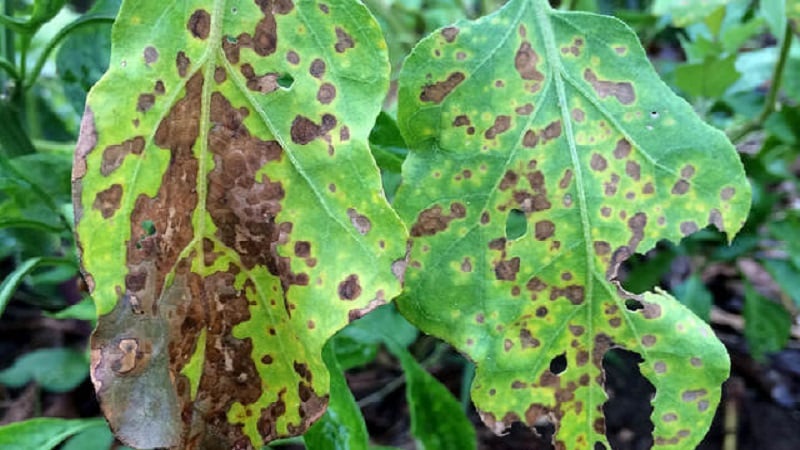
Mosaic
A viral disease appears as a green and yellow pattern on leaves and stems. Over time, the leaves become deformed and the fruits stop growing.For prevention, eggplants are planted in the greenhouse in seedlings, having previously treated the seeds and soil with a solution of potassium permanganate or succinic acid. If the mosaic has already appeared, then the infected plants are removed from the garden bed, and the remaining ones are treated with copper sulfate.
Important! Often a mosaic occurs during transplantation of seedlings into the garden or during picking. It is recommended to replant the seedlings carefully so as not to damage the still fragile and weak stems. It is better to plant the seeds immediately in a larger container so as not to pick the seedlings.
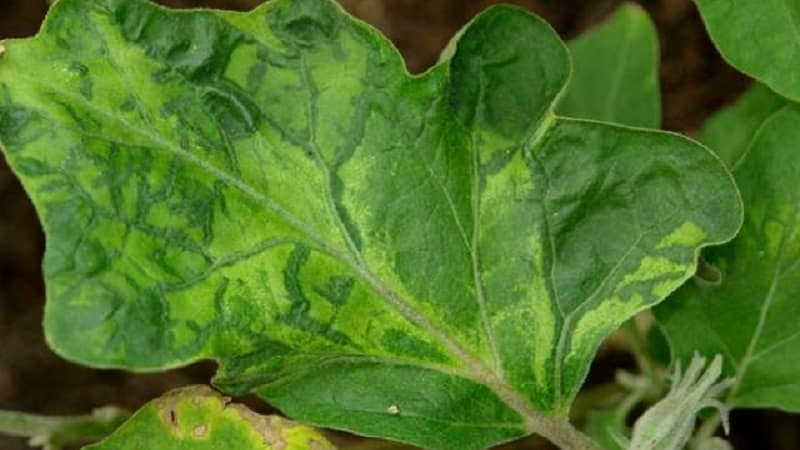
Late blight
The fungus affects both adult eggplants and young bushes.. Occurs due to dense planting, contaminated seeds, hot and rainy weather. Plants wither and become covered with brown spots and ulcers. The fruits become sluggish, stop developing and lose their taste.
For prevention, eggplants are planted in clean beds with neutral acidity., maintain the water temperature for irrigation, remove weeds. The fungus is treated with Oxyx, Maxim, and Quadris.

It can be useful:
Easy to care for and amazing in taste, “King of the Market”
Subtleties of caring for the “Black Opal” eggplant variety
Review of the “Black Prince” eggplant variety and its cultivation
Bacterial spot
Bacteria attack greenhouse eggplants during any growing season.. The leaves become covered with dark spots with a yellow border, and watery spots appear on the fruits, which eventually become deep ulcers. Bacterial spotting actively develops during periods of rain and fog and occurs due to high humidity and lack of fertilizing.
For preventive purposes, the beds are loosened and fertilized in a timely manner. organics and minerals, the drug “Strobi” is used for treatment. It is brought into the ground and the beds are watered abundantly.
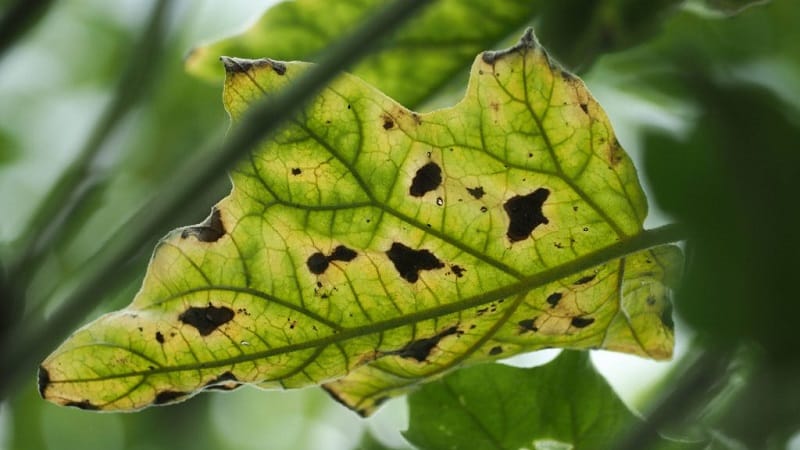
Sclerotinia (white rot)
The fungus lives in the soil and withstands frost and bad weather.. It infects the roots, they become white and have internal seals. Due to the disease, the plant does not have access to nutrients, stops growing and withers. The leaves become stained, the eggplants become soft and insipid.
The cause of infection is watering with cold water, contaminated soil and garden tools.. For prevention, before planting, disinfect the soil and ventilate the greenhouse daily. Copper oxychloride or Fundazol is used for treatment.
Important! When adding medications, follow the dosage indicated by the manufacturer on the packaging. Failure to follow recommendations can lead to negative consequences for human health.
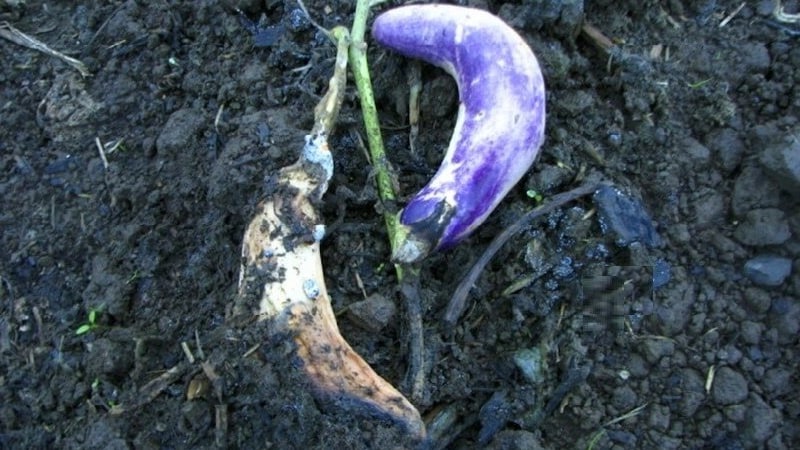
Why do eggplants get sick in a greenhouse?
Why do eggplants get sick? Diseases arise for various reasons. The most common are contaminated seeds and soil.. It is important to treat them before planting to protect them from bacteria, viruses and fungi.
The cause of disease lies in the wrong choice of varieties. For regions with cold summers, greenhouse hybrid eggplants are chosen - they are resistant to diseases and pests. Mid-ripening or late-ripening varieties are suitable for planting in the south and middle zone.
Why do they rot?
The reasons for eggplant rotting in a greenhouse are high humidity and dense planting.. The peculiarity of greenhouse vegetables is that the greenhouse is characterized by a special microclimate.
Pathogens actively develop in conditions of heat and humidity. The greenhouse is always stuffy, so gardeners regularly ventilate the structure. Watering eggplants requires less water than moistening outdoor beds.
Pests and methods of controlling them
In addition to diseases, insect pests appear in the beds. If measures are not taken in time, they can destroy up to 80% of the entire crop.
Aphid
Aphids settle on roots, leaves and stems. Spread by weeds, wind, ants and birds. Small green bugs suck the cell sap from the bushes and secrete poison, which causes the leaves to dry out and become deformed. The plant stops growing, the fruits lose their elasticity. Aphids infect the plant with diseases by secreting saliva.
Both young seedlings and adult bushes are exposed to the pest. The bugs are perfectly camouflaged, so it is recommended to regularly inspect the plants to detect them.
Used for prevention and treatment spraying with whey and ash solution. Eggplants are processed no later than two weeks before harvest.

Whitefly
White miniature midge appears in greenhouses and greenhouses. It occurs due to heat and humidity, settles on the inside of the leaf, so it is difficult to notice with the naked eye. The whitefly feeds on the sap of the plant, which is why the eggplants lack vitamins for further development.
Get rid of pests using drugs "Pegasus" or "Confidor". Among folk remedies, gardeners prefer herbal infusions of nettle, plantain, and chamomile. They spray the bushes from all sides.
Important! Sticky traps are used to kill whiteflies in the greenhouse. Pieces of plywood are smeared with Vaseline, honey and painted yellow.Insects mistake the plywood for a sweet, bright flower and fall into traps.

Slugs
Slugs belong to the class of gastropods. Their body has a jelly-like viscous consistency. Slugs live alone - they sit on a leaf and envelop it with their liquid. Leaves lose color and become weak.
The pest is easy to detect - they are painted black or brown.. For prevention, sprayings based on laundry soap are used. Copper sulfate or “HOM” is used for treatment.
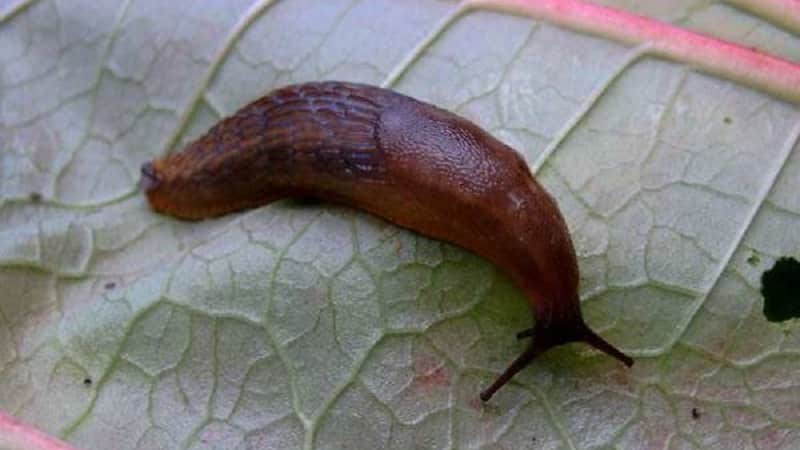
Spider mite
Brown bug eats plant leaves, due to which the metabolism is disrupted and the eggplant’s immunity is reduced. To prevent the appearance of the pest, before planting, thoroughly clean the beds, destroy all plant debris, and treat the soil with a solution of potassium permanganate.
In case of inaction spider mite provokes the appearance of viruses and fungi. To get rid of ticks, use “Confidor” or “Neoron” products.

Read also:
Why do eggplants turn green instead of blue and how to prevent it?
What are white eggplants and how are they different from regular ones?
Colorado beetle
This pest loves the entire nightshade family - and eggplants, and tomatoes, and potatoes. The insect is frost-resistant and can tolerate the lowest temperatures without problems. Both larvae and adult striped individuals are dangerous for the plant.
The beetle destroys plant leaves before our eyes, and it is not easy to get rid of it. For prevention, the beds are regularly inspected, larvae and adult beetles are collected manually.
Professional means are used for treatment:
- "Kondafor";
- "Tornado";
- "Prestige";
- "Taboo".
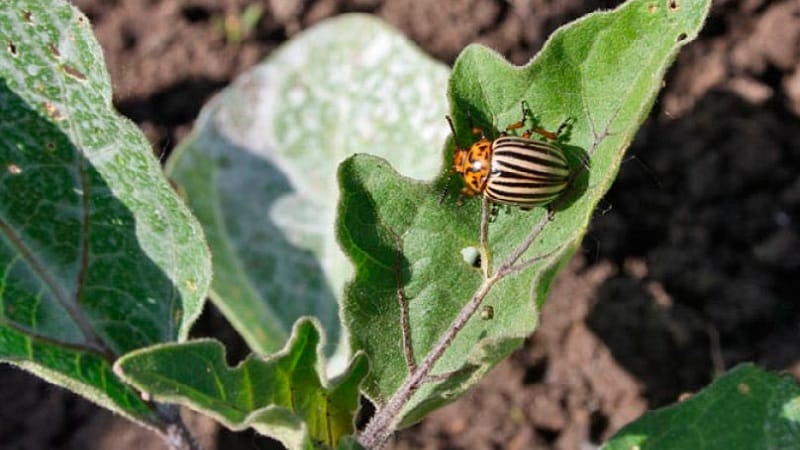
Preventive measures
To grow a full-fledged harvest, experienced gardeners It is recommended to follow a number of preventive measures:
- Before planting, seeds are disinfected, germinated and hardened.
- Eggplants are planted after greens, onions, and legumes. It is not recommended to use beds after potatoes, sweet peppers or tomatoes.
- Crops are not grown on the same land for more than two years in a row.
- Water the bushes in the early morning or evening to avoid sunburn.
- The water temperature for irrigation should be at least +20 °C.
- Approximately 1-1.5 liters are consumed per bush. If the summer is rainy and humid, then the amount of water is reduced.
- For planting in regions with cool summers, early ripening varieties are chosen.
- The distance between plants when planting should be at least 50 cm.
- Alternate organic and mineral fertilizers.
Conclusion
To reap a rich harvest, it is recommended to follow the rules of cultivation and care. They protect against diseases and pests and strengthen the plant’s immunity. If crop rotation and watering regimes are not followed, fungi such as late blight or fusarium appear in the beds. Colorado beetles or whiteflies often appear in greenhouses due to heat and stuffiness.
To protect the crop from diseases and insects, preventive measures are used: spraying with ash, soap or herbal solution. For treatment, they turn to fungicides.